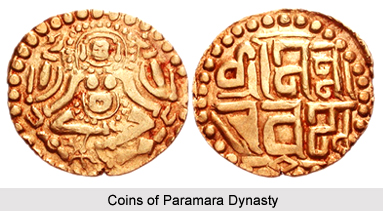 History of Dhar District shows that both historically and culturally, this district has occupied an important place. According to the history of Dhar District, Dhar was formerly known as Dhar Nagari in the ancient period and Piran Dhar in medieval period. Further, it has had the privilege of being the capital city, both in the ancient and in the early medieval periods.
History of Dhar District shows that both historically and culturally, this district has occupied an important place. According to the history of Dhar District, Dhar was formerly known as Dhar Nagari in the ancient period and Piran Dhar in medieval period. Further, it has had the privilege of being the capital city, both in the ancient and in the early medieval periods.
Ancient history of Dhar District says that the Paramaras ruled over a vast territory around Malwa for around 400 years from ninth to thirteenth centuries. Vakpati Munja and Bhojadeva were the most famous rulers of the Paramara Dynasty. Munja was a great general, a poet of repute and a great patron of art and literature. He excavated the Munja Sagar at Dhar and Mandu and built beautiful temples at a number of places.
Further, the history of Dhar District also tells that Bhojadeva, the most illustrious king of the Parmaras, was actually one of the greatest kings of ancient India. His name became a household word in India not only as a soldier but also as a builder, a scholar and a writer. Later, he shifted his capital from Ujjain to Dhar, where he established a university for Sanskrit studies. He rebuilt various temples, including the magnificent temple at Bhojapur. Bhoja also created a large lake near Bhojapur. In the year 1305 AD, the whole of Malwa passed into the hands of Ala-ud-din Khilji when Dhar and Mandu were also captured. Dhar continued to be under the Delhi Sultanates until the reign of Muhammad II. At that time, Dilawar Khan Ghuri was the Governor of Malwa. In 1401 AD, he assumed royalty and established an independent Kingdom of Malwa, with his capital at Dhar. His son and successor, Hoshang Shah moved the capital to Mandu. Hoshang Shah died in 1435 AD. and on Hoshang`s death his son, Ghazni Khan, succeeded him. He ordered his capital Mandu to be called Shadiabad (the City of Joy). He, however, had a very short reign, as he was poisoned to death by Mahmud Khilji in 1436 A.D. Mahmud Khan ascended the throne and inaugurated the reign of the Khilji Sultans in Malwa. The Sultans of Khilji dynasty continued to rule Malwa until 1531 A.D.
In the administrative organisation of Akbar, Dhar was the chief town of a Mahal in Mandu Sarkar of the Subah of Malwa. Akbar stayed at Dhar for seven days, while directing the invasion of the Deccan. He also visited Mandu a number of times. Mandu was also a favourite resort of Emperor Jahangir, who stayed here for over six months in 1616 AD. When Baji Rao Peshwa divided Malwa among Scindhia, Holkar and the three Pawar chief, in 1832 AD Dhar was bestowed on Anand Rao Pawar.
The rulers of Dhar held away over this area until 1948, except for a brief period of three years, following the great revolt of 1857. As an aftermath of the revolt, Dhar state was annexed to British territory. Thus, history shows that Dhar District played a significant role in the freedom struggle of the country.



















